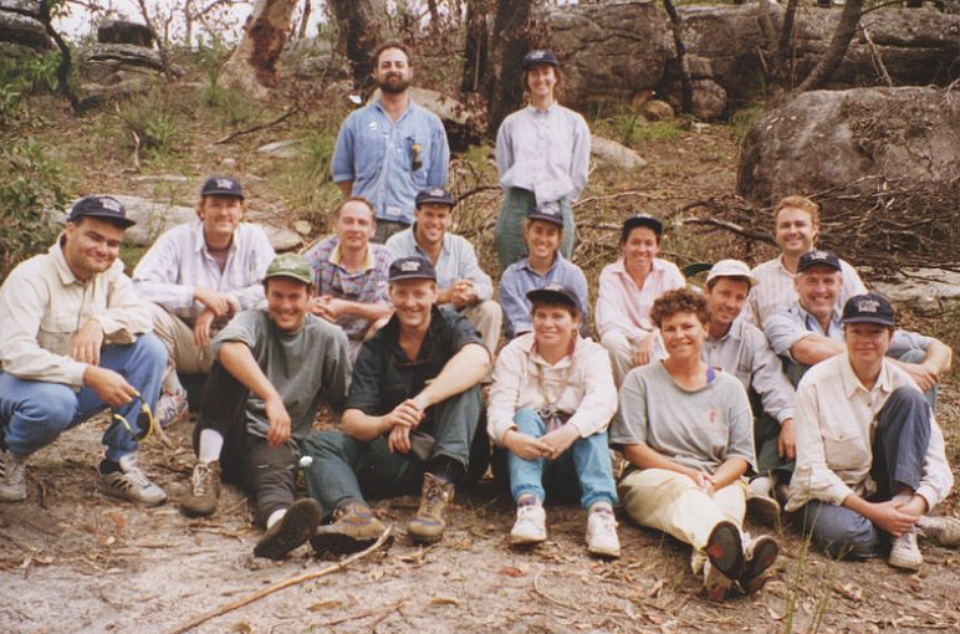
ICDA and BoardPro partnership unlocks digital governance tools for not-for-profits nationwide
Posted on 10 Dec 2025
Adele Stowe-Lindner, Executive Director, Community Directors The Institute of Community Directors…
Posted on 24 Jun 2025
By Greg Thom, journalist, Institute of Community Directors Australia

An army of “citizen scientists” have helped identify the clearing of more than 90,000 hectares of native species habitat across Australia.
A total of 675 members of the public identified the destruction using an online tool developed by the Australian Conservation Foundation (ACF), which compared satellite imagery from 2023 and 2024.
The results showing the extent of the deforestation were then sent to ACF investigators for verification.

Most of the clearing occurred on agricultural land, with some of the 176 properties identified located at the edge of a World Heritage Area.
The amount of land cleared was equal in size to 320 Sydney CBDs.
The ACF said that up to 500,000 hectares of habitat is razed in Australia every year. For every 100 hectares cleared, an estimated 2,000 birds, 15,000 reptiles and 500 mammals are killed.
ACF lead environmental investigator Annica Schoo praised the efforts of those who helped identify the loss of habitat.
“The clearing was detected by hundreds of dedicated, nature-loving Australians - on their smartphones while commuting to work and on computers at home,” she said.
“The fact so many cases can be found in a short time by a non-governmental organisation shows why we need an independent federal Environmental Protection Authority.”
Amateur nature sleuth Ruth Hughes spent hours on her phone examining the land clearing images, which she said left her “outraged.”
“Some were in such remote areas... It's like, somebody thought, ‘Oh, well, I can get away with this, because who's looking?’... Well, I'm looking, and I care,” she said.
“I do feel outraged about land clearing. We're in a climate and extinction crisis, and we need our native vegetation for people, let alone animals and everything.”
A before and after satellite view of the impact of extensive land clearing on a property between July 2023 and July 2024 captured by citizen scientists using the ACF's online mapping tool.

"That we still uncover destruction like this is why Australia is the only developed country on a list of global deforestation hotspots.”

ACF business and nature lead Nathaniel Pelle said beef production was the primary driver in the bulldozing of bush that was mapped as habitat for nationally threatened species.
"That we still uncover destruction like this is why Australia is the only developed country on a list of global deforestation hotspots,” said Pelle.

“It’s an embarrassing status that demands action from the federal government as we head into the next climate COP meeting in Brazil, where deforestation will be a key focus.”
Pelle said the 90,000 hectares bulldozed in Australia was almost three times as much land as the 32,000 hectares lost to deforestation for palm oil in Indonesia every year.
In northern NSW, deforestation had occurred on neighbouring properties sandwiched between two national parks near the Gondwana Rainforests of Australia World Heritage Area, home to the threatened brush-tailed rock wallaby.
"This is the most exasperating case of deforestation I have witnessed,” said Pelle.
“On one side of the fence you have a living, ancient forest recognised as a place of World Heritage and on the other you have what used to be forest but is now a paddock.
“When Aussies buy a burger at the drive-through or a pie at the footy, they want to know they’re supporting farmers who care for nature, not the ones still bulldozing the bush.”
The growing trend of conservation groups harnessing the power of concerned citizens to protect endangered habitat was on display at the recent Infoxchange Not-for-profit Technology Awards.
The Wilderness Society picked up an innovation award for its Watch on Nature web-based platform, which uses satellite imagery and simplified GIS tools to monitor and map deforestation activities.
The award category sought to recognise a not-for-profit organisation that has best showcased innovation through the use of technology to effectively deliver programs and/or services that positively impact the community.
ACF said it will report 76 cases covering 31,866 hectares of land clearing to the federal government for potential breaches of Australia’s national nature law, the Environment Protection and Biodiversity Conservation Act (PBC Act).
Philanthropic grants grow to meet environmental threats - but not fast enough

Posted on 10 Dec 2025
Adele Stowe-Lindner, Executive Director, Community Directors The Institute of Community Directors…

Posted on 10 Dec 2025
The Australia Institute has called on the federal government to force Australian businesses to be…

Posted on 10 Dec 2025
Economic empowerment is essential to enabling recovery, restoring agency and preventing future…
Posted on 10 Dec 2025
A long-time advocate for rough sleepers in northern New South Wales has been named her state’s…

Posted on 10 Dec 2025
What a year 2025 has been, particularly at a national level where the Parliament and politics as we…

Posted on 10 Dec 2025
Anyone working in an organisation knows it: meetings follow one after another at a frantic pace. On…

Posted on 10 Dec 2025
As a qualified yoga instructor who learned the practice in her hometown of Mumbai, Ruhee Meghani…

Posted on 10 Dec 2025
Community Directors trainer Jon Staley knows from first-hand experience the cost of ignoring…

Posted on 10 Dec 2025
Stressed, overwhelmed, exhausted… if you’re on a not-for-profit board and these words sound…

Posted on 10 Dec 2025
The Institute of Community Directors Australia trains over 22,000 people each year, which gives us…

Posted on 09 Dec 2025
The late Sir Vincent Fairfax is remembered as a business leader, a chairman of AMP, and an active…

Posted on 08 Dec 2025
A pioneering welfare effort that helps solo mums into self-employment, a First Nations-led impact…